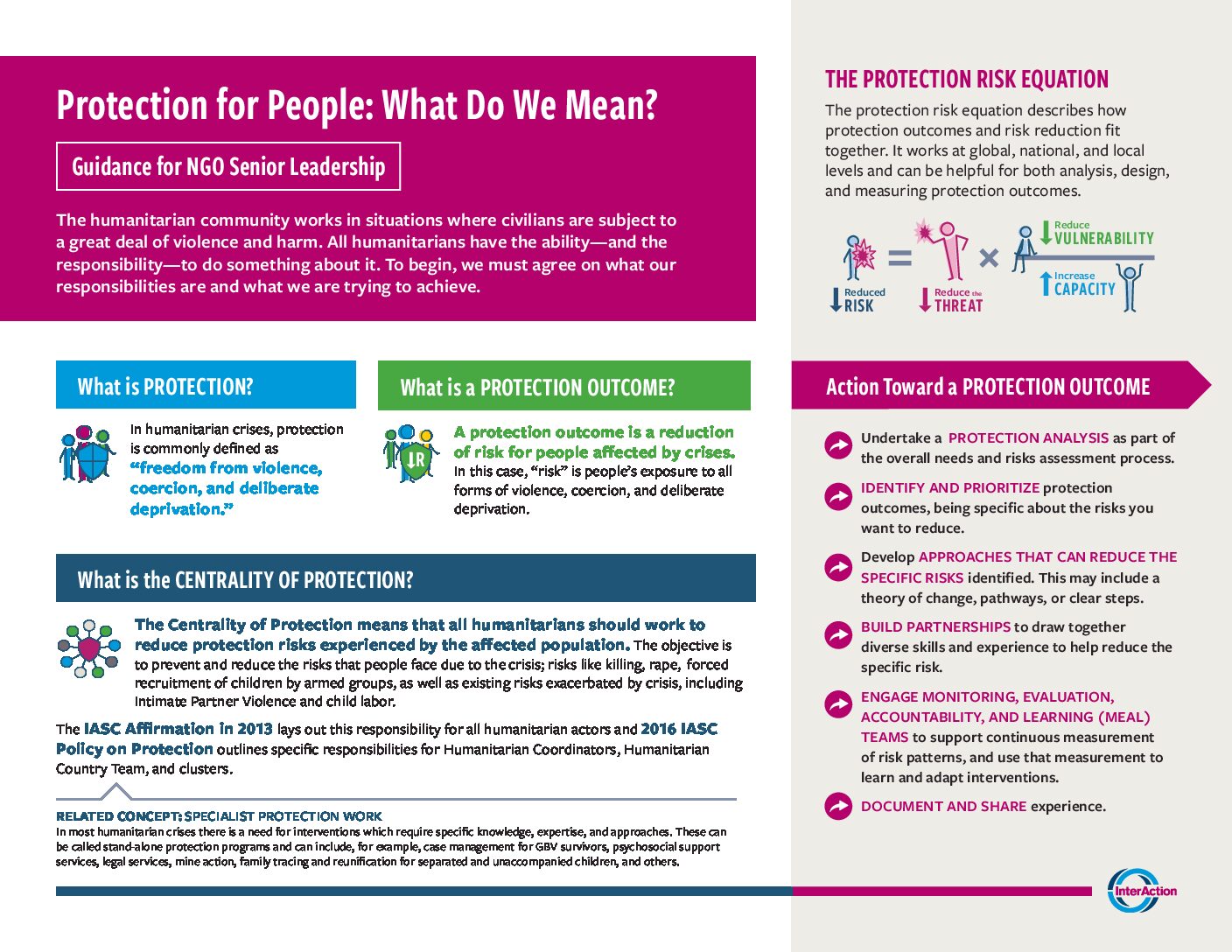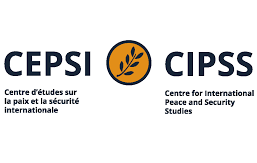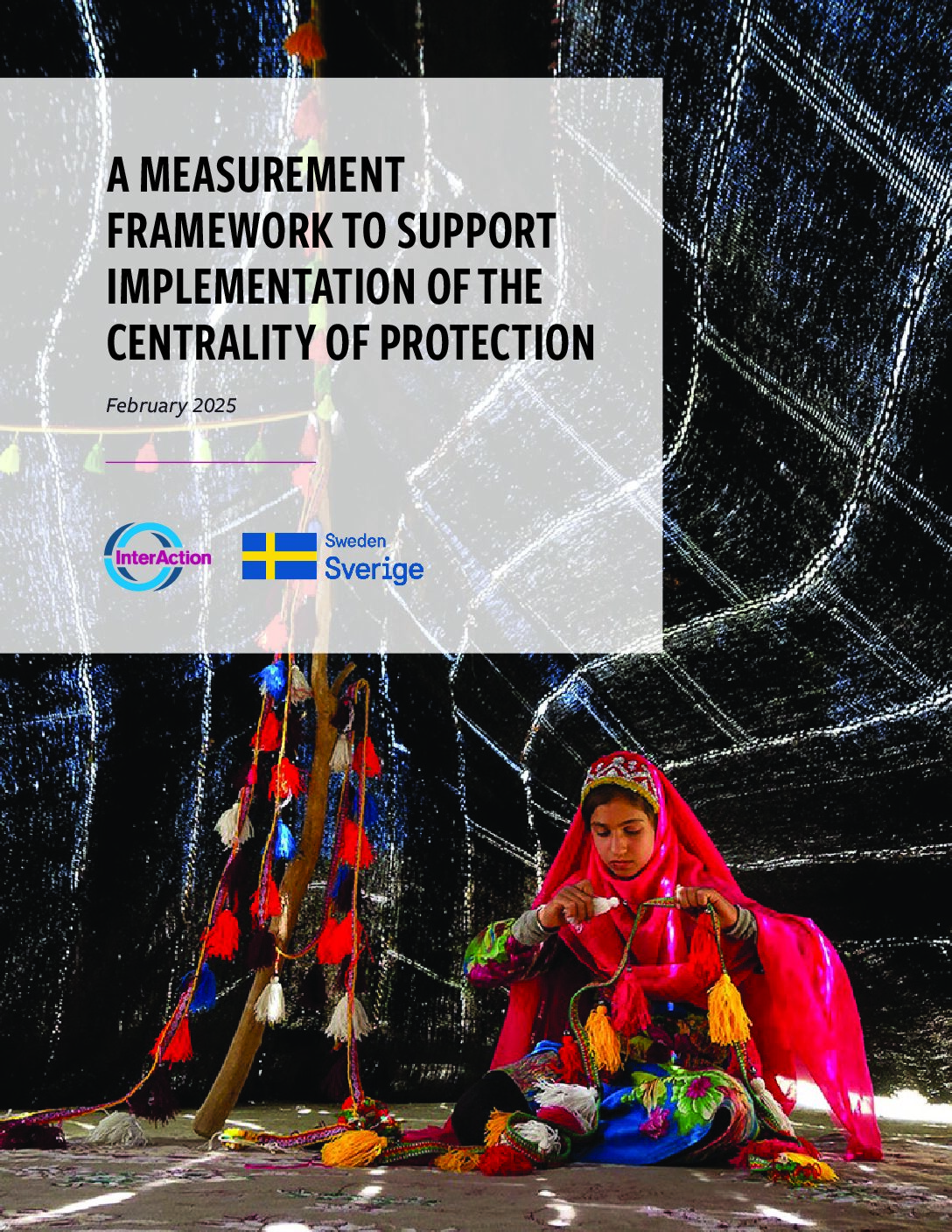Earlier this year, through the financial support of the Swedish International Development Agency (Sida), InterAction commissioned an independent evaluation of its Results-Based Protection (RBP) program. The evaluation reviewed the RBP program against its strategic objective to determine the relevance and effectiveness of InterAction’s varying RBP activities and efforts since 2012, with emphasis on the two years funded by Sida (2019-2021). To bolster the achievements of the program, a key recommendation from the evaluation was to “develop a new strand of strategic engagement focused on humanitarian generalist leaders.” The evaluation suggested that InterAction work with humanitarian NGO leaders and decision-makers to explore specific ways of building RBP into organizational strategies.
Following the conclusion of the evaluation, InterAction began working on an engaging, ‘easy to reference’ and ‘easy to hang on a wall’ visual set of handouts for NGO senior leadership including Country Directors and equivalent who are responsible for programming and strategy. Given the wide range of responsibilities NGO senior leaders have, these handouts attempt to distill the core messages on protection that are relevant to a leader’s role. InterAction worked with a set of graphic designers to create the handouts and also tested them with field colleagues to ensure that they would bring value to these key stakeholders.
The handouts are divided into four pages:
Page 1
Protection language can create confusion amongst humanitarian NGOs. What is Protection? What is a Protection Outcome? What is the Centrality of Protection? The handouts provide a set of concise definitions for key terminology relevant to the roles of NGO senior leaders. The first page also introduces the protection risk equation and lays out a clear set of actions that are needed to achieve protection outcomes.
Page 2
The second prepares organizations on how to achieve protection outcomes within their organizations. As part of their preparations, organizations are encouraged to put protection at the center of the organization’s vision, mission, and goals. This allows the organization to develop a useful protection strategy, tailor policy and practice accordingly, and develop strategic partnerships with different skillsets that can contribute to reducing risk. This page also looks at the complementary strategies that leaders can use to guide their organizations – organizations with different skills, experience, sizes, and strategic objectives, to protection outcomes.
Page 3
The handouts continue with an illustrated case study showing how NGOs can achieve protection outcomes. The case example is set in an area controlled by non-state armed groups which are attacking and destroying schools and/or using them as barracks to store their equipment and conduct drills. The graphic, which is measured by risk and time, indicates key changes in practice, behavior, attitude, knowledge, and policy (i.e. results) which leads to the reduction of risk of children being killed/injured or losing access to school (i.e. protection outcome). The line is purposely not linear as it is a testament to the iterative pathway that is frequently needed in order to reduce risk.
Page 4
To ensure that protection is a solid foundation of humanitarian action, it is vital that NGOs identify multiple ways to work collectively both within and outside the humanitarian system to achieve protection outcomes. The third page of the handouts presents four success stories of different actors working together to achieve protection outcomes.
Everyone is encouraged to share the handouts as widely as possible with NGO senior leaders. Together, we can all work to ensure that protection outcome is embedded both at the organizational level, in any new humanitarian response, or at any time that new programming is being considered. Protection analysis and risk reduction should be central.
| Title of File | Language | |
|---|---|---|
| Protección para las personas: ¿a qué nos referimos? Orientación para el liderazgo sénior | Español | Download |
| Protection des personnes : que voulons-nous dire? Orientations à l’intention de la haute direction | Français | Download |
| حماية الناس: ماذا نعني؟ إرشادات للقيادات العليا | العربية | Download |



